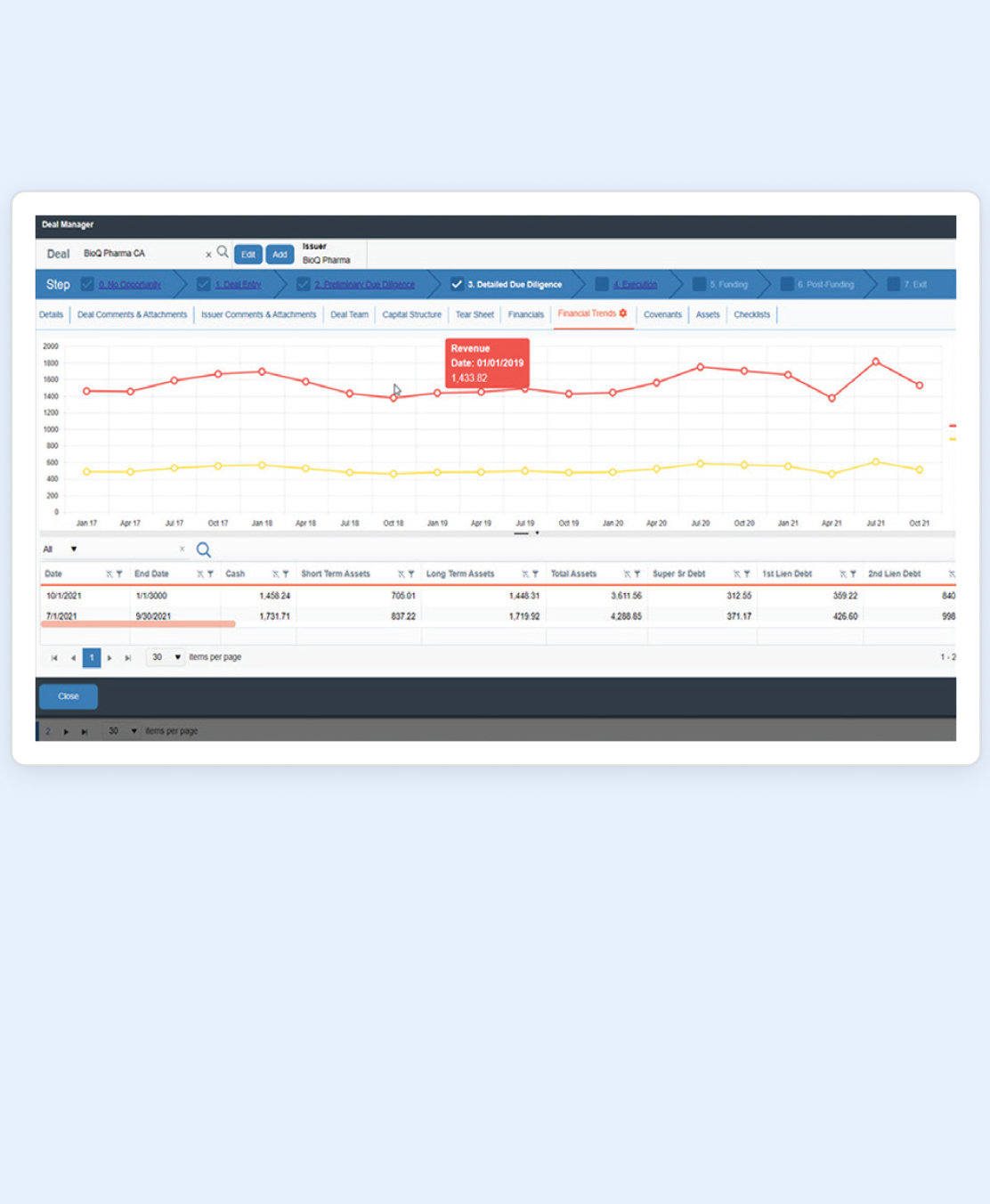Private Market Solutions
Automated. Integrated. Informative.
-
Manage approvals, limits, and more
-
Link analysts to companies and deals
-
Initiate trade orders and loans directly from the pipeline
-
Customize dashboards for a holistic view
-
Analyze trends across companies and industries
-
Monitor pipeline deals and current investments
-
Capture company financials, industry credit data, and more
-
Store unlimited time series data
-
Customize multiple datasets per industry
-
Add attachments, network shares, and supporting documents
-
Ensure quick and easy access to relevant information
-
Facilitate better collaboration and record-keeping
Sentry PM: The unified private investment platform
Informed decisions at every step
Set approvals and limits, link analysts to companies and deals, and initiate orders from the pipeline to quickly capitalize on potential opportunities.
Holistic views of risk and performance
Customize dashboards to comingle qualitative and quantitative data, revealing the potential opportunities and risks that could affect performance.
Advanced analyses
Make precise financial assessments using real-time insights regarding companies and industries.
Collaborative and accessible records
Eliminate time spent searching for documents with a centralized repository for supporting documents such as memoranda and financial statements.
Enhanced communication and coordination
Strengthen client relationships and operational efficiency with tools to systematically manage every interaction and follow-up.
Continuous regulatory oversight
Receive daily compliance status reports on collateral quality, portfolio limitations, and more to reduce regulatory risk and build trust with stakeholders.










